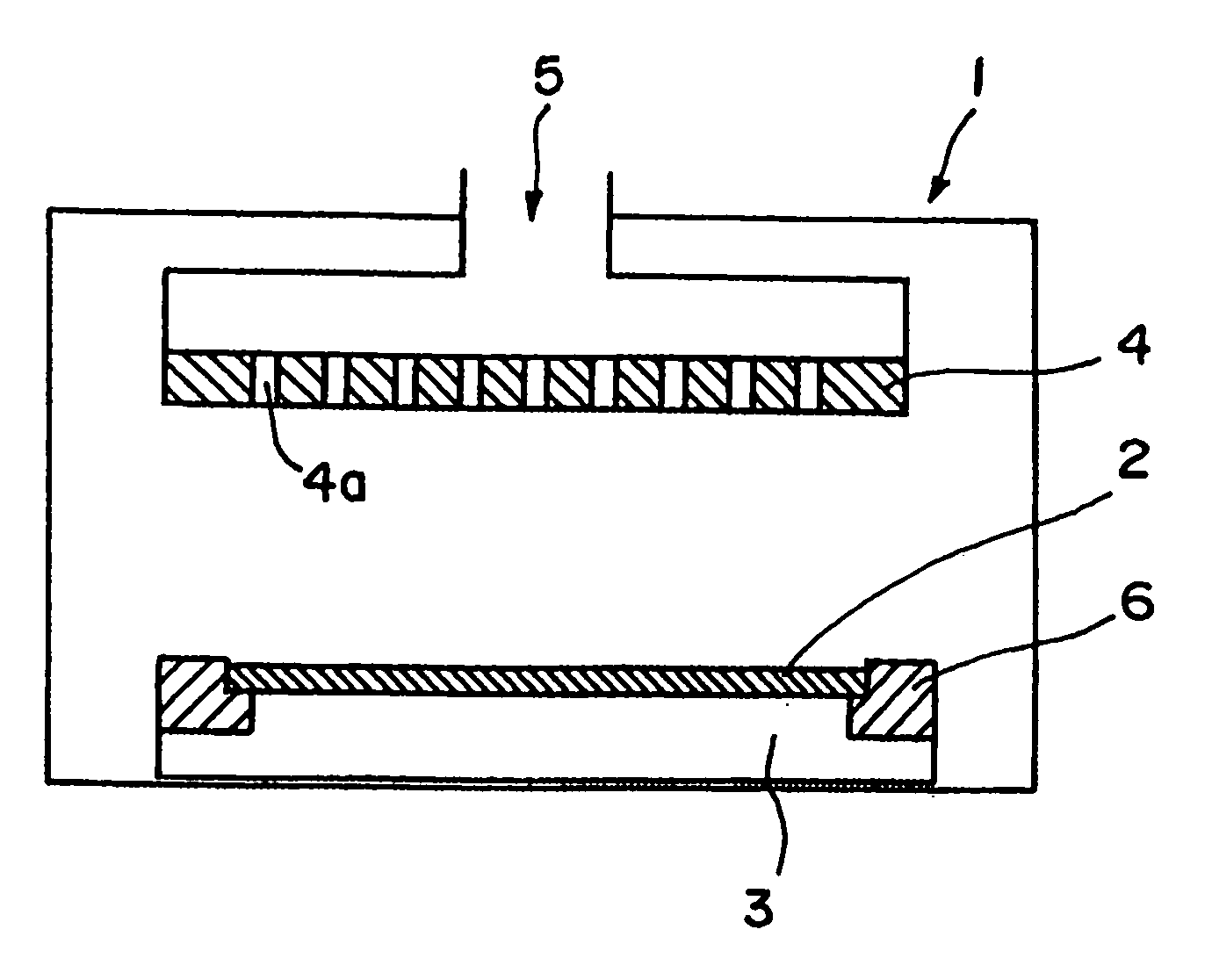Silicon member and method of manufacturing the same
- Summary
- Abstract
- Description
- Claims
- Application Information
AI Technical Summary
Benefits of technology
Problems solved by technology
Method used
Image
Examples
embodiment
[0062] Hereinafter, the present invention will be described more specifically based on embodiment, but the present invention is not limited by the following embodiment.
[0063] A P-type silicon single crystal doped with boron at a concentration of 1.72×1015 atoms / cm3 (having an intrinsic resistivity of 7.7 Ω·cm and a resistivity of 12.1 Ω·cm) was worked into a focus ring (having an outside diameter of 360 mm, an inside diameter of 302 mm, and a thickness of 5 mm), as shown in FIG. 1.
[0064] Thereafter, this was subjected to annealing processing under argon atmosphere at 470° C. for 15 hours, thereby being changed in its conduction type from a P type into an N type. In this manner, a focus ring made of an N-type silicon single crystal was manufactured.
[0065] The study of characteristics of the produced focus ring revealed that the focus ring had a resistivity of 2.7 Ω·cm and an oxygen concentration of 1.5×1018 atoms / cm3.
PUM
 Login to View More
Login to View More Abstract
Description
Claims
Application Information
 Login to View More
Login to View More - R&D
- Intellectual Property
- Life Sciences
- Materials
- Tech Scout
- Unparalleled Data Quality
- Higher Quality Content
- 60% Fewer Hallucinations
Browse by: Latest US Patents, China's latest patents, Technical Efficacy Thesaurus, Application Domain, Technology Topic, Popular Technical Reports.
© 2025 PatSnap. All rights reserved.Legal|Privacy policy|Modern Slavery Act Transparency Statement|Sitemap|About US| Contact US: help@patsnap.com


